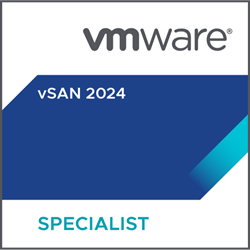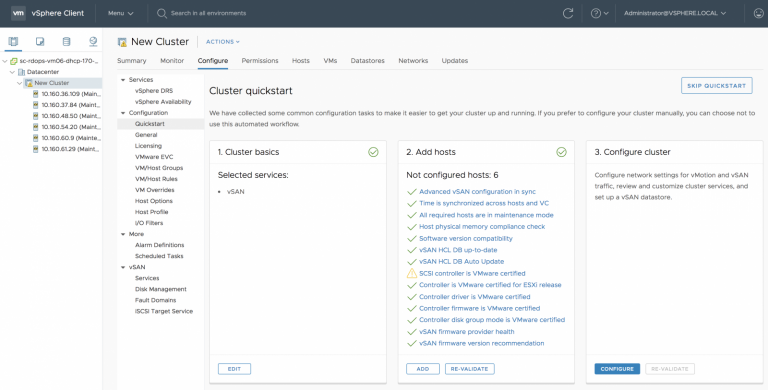VMware vSAN: Install, Configure, Manage [V8]

The VMware vSAN: Install, Configure, Manage [V8] Course is an educational program that provides attendees with a broad understanding of vSAN technology and its applications. During the course, attendees will have the opportunity to learn the fundamentals of vSAN technology, including its architecture, software components, and how to integrate with other VMware technologies. Attendees will be introduced to the various stages of planning, implementing, and managing a vSAN cluster, including consideration of storage needs, fault tolerance, and best practices for configuring vSAN networks. Detailed instructions on configuring and tuning vSAN storage policies will also be provided, as well as explanations of data resiliency and availability techniques. Additionally, the course covers topics such as storage efficiency, security operations, using vSAN HCI Mesh, and File and iSCSI Target services. We will also delve into concepts such as vSAN Stretched and two-node clusters, cluster maintenance and monitoring, troubleshooting, and the vSAN Express Storage Architecture. This course helps prepare you for the VMware Certified Specialist vSAN 2024 Certification exam .
Course Objectives
Below is a summary of the main objectives of the VMware vSAN: Install, Configure, Manage [V8] Course :
- Understand the vSAN architecture and software components.
- Implement and manage vSAN clusters, considering aspects such as storage and fault tolerance.
- Configure and optimize vSAN storage policies.
- Dive deeper into topics such as data resilience, storage efficiency, and security.
- Understand vSAN HCI Mesh, File, and iSCSI Target services, and the vSAN Express storage architecture.
- Perform advanced troubleshooting and maintenance of vSAN environments.
- Integrate vSAN with VMware vSphere and other VMware products for enhanced functionality.
- Monitor and analyze vSAN performance using VMware management tools and techniques.
Course Certification
This course helps you prepare to take the:
VMware Certified Specialist vSAN Exam 2024;
Course Outline
Module 1: Course Introduction
- Introduction and course logistics
- Course objectives
Module 2: Introduction to vSAN
- Describe vSAN architecture
- Describe the vSAN software components: CLOM, DOM, LSOM, CMMDS, and RDT
- Identify vSAN objects and components
- Describe the advantages of object-based storage
- Describe the difference between All-Flash and Hybrid vSAN architecture
- Explain the key features and use cases for vSAN
- Discuss the vSAN integration and compatibility with other VMware technologies
Module 3: Planning a vSAN Cluster
- Identify requirements and planning considerations for vSAN clusters
- Apply vSAN cluster planning and deployment best practices
- Determine and plan for storage consumption by data growth and failure tolerance
- Design vSAN hosts for operational needs
- Identify vSAN networking features and requirements
- Describe ways of controlling traffic in a vSAN environment
- Recognize best practices for vSAN network configurations
Module 4: Deploying a vSAN Cluster
- Recognize the importance of hardware compatibility
- Ensure the compatibility of driver and firmware versioning
- Use tools to automate driver validation and installation
- Apply host hardware settings for optimum performance
- Use VMware vSphere® Lifecycle ManagerTM
- to perform upgrades
- Deploy and configure a vSAN Cluster using the Cluster QuickStart wizard
- Manually configure a vSAN Cluster using VMware vSphere® Client™
- Explain and configure vSAN fault domains
- Using VMware vSphere® High Availability with vSAN
- Understand vSAN Cluster maintenance capabilities
- Describe the difference between implicit and explicit fault domains
- Create explicit fault domains
Module 5: vSAN Storage Policies
- Describe a vSAN object
- Describe how objects are split into components
- Explain the purpose of witness components
- Explain how vSAN stores large objects
- View object and component placement on the vSAN datastore
- Explain how storage policies work with vSAN
- Define and create a virtual machine storage policy
- Apply and modify virtual machine storage policies
- Change virtual machine storage policies dynamically
- Identify virtual machine storage policy compliance status
Module 6: vSAN Resilience and Data Availability
- Describe and configure the Object Repair Timer advanced option
- Plan disk replacement in a vSAN cluster
- Plan maintenance tasks to avoid vSAN object failures
- Recognize the importance of managing snapshot utilization in a vSAN cluster
Module 7: Managing vSAN Storage Space Efficiency
- Discuss deduplication and compression techniques
- Understand deduplication and compression overhead
- Discuss compression only mode
- Configure erasure coding
- Configure swap object thin provisioning
- Discuss reclaiming storage space with SCSI UNMAP
- Configure TRIM/UNMAP
Module 8: vSAN Security Operations
- Identify differences between VM encryption and vSAN encryption
- Perform ongoing operations to maintain data security
- Describe the workflow of data-in transit encryption
- Identify the steps involved in replacing Key Management Server
- Module 9: vSAN HCI Mesh
- Understand the purpose of vSAN HCI Mesh
- Detail vSAN HCI Mesh technology and architecture
- Perform mount and unmount of a remote datastore
Module 10: vSAN File Service and iSCSI Target Service
- Understand the purpose of vSAN File Services
- Detail vSAN File Services architecture
- Configure vSAN File Shares
- Describe vSAN iSCSI Target Service
Module 11: vSAN Stretched and Two Node Clusters
- Describe the architecture and uses case for stretched clusters
- Detail the deployment and replacement of a vSAN witness node
- Describe the architecture and uses case for two-node clusters
- Explain storage policies for vSAN stretched cluster
Module 12: vSAN Cluster Maintenance
- Perform typical vSAN maintenance operations
- Describe vSAN maintenance modes and data evacuation options
- Assess the impact on cluster objects of entering maintenance mode
- Determine the specific data actions required after exiting maintenance mode
- Define the steps to shut down and reboot hosts and vSAN clusters
- Use best practices for boot devices
- Replace vSAN nodes
Module 13: vSAN Cluster Monitoring
- Describe how the Customer Experience Improvement Program (CEIP) enables VMware to improve products and services
- Use VMware Skyline Health for monitoring vSAN cluster health
- Manage alerts, alarms, and notifications related to vSAN in VMware vSphere® Client™
- Create and configure custom alarms to trigger vSAN health issues
- Use IOInsight metrics for monitoring vSAN performance
- Use a vSAN proactive test to detect and diagnose cluster issues
Module 14: vSAN Troubleshooting
- Use a structured approach to solve configuration and operational problems
- Apply troubleshooting methodology to logically diagnose faults and optimize troubleshooting efficiency
- Use VMware Skyline Health to investigate and help determine failure conditions
- Explain which log files are useful for vSAN troubleshooting
Module 15: vSAN Express Storage Architecture
- Understand the purpose of vSAN Express Storage Architecture
- Describe the vSAN Express Storage Architecture components
- Identify Storage Policy differences
- Understand compression and encryption operation differences
Course Mode
Instructor-Led Remote Live Classroom Training;
Trainers
Trainers are VMware Official Instructors and certified in other IT technologies, with years of hands-on experience in the industry and in Training.
Lab Topology
For all types of delivery, the Trainee can access real Cisco equipment and systems in our laboratories or directly at the Cisco data centers remotely 24 hours a day. Each participant has access to implement the various configurations thus having a practical and immediate feedback of the theoretical concepts.
Here are some VMware vSphere Labs topologies available:

Course Details
Course Prerequisites
Attendance at the VMware VCP-DCV Course is recommended .
Course Duration
Intensive duration 4 days
Course Frequency
Course Duration: 4 days (9.00 to 17.00) - Ask for other types of attendance.
Course Date
- VMware vSAN: Install, Configure, Manage [V8]] Course (Intensive Formula) – On request – 09:00 – 17:00
Steps to Enroll
Registration takes place by asking to be contacted from the following link, or by contacting the office at the international number +355 45 301 313 or by sending a request to the email info@hadartraining.com


